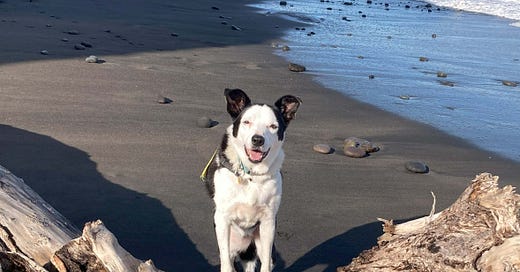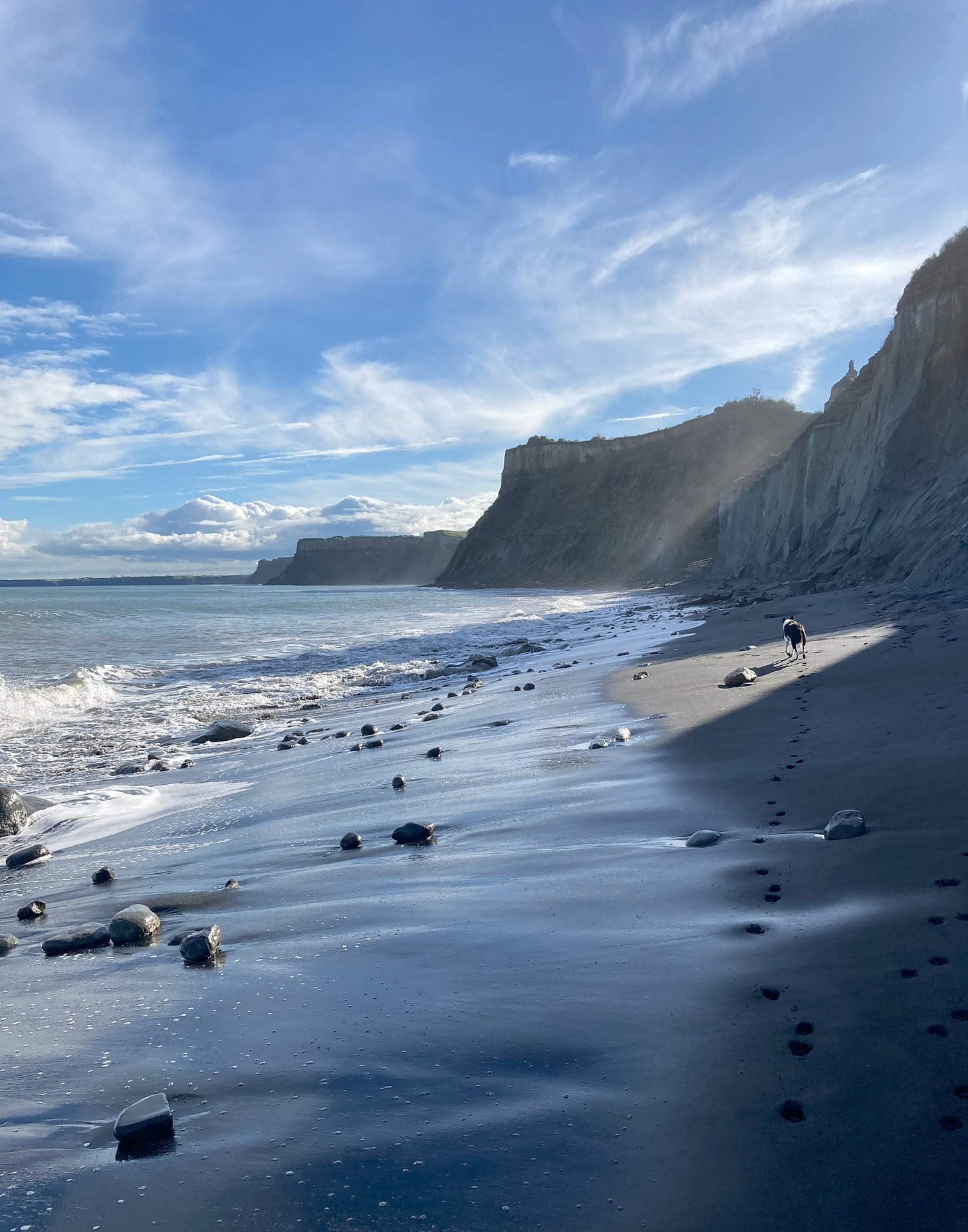Trespassers
Donna and I enjoy the forboding beauty of a beach where we don't belong (3 minute preview, 6 minute full article)
The sky is clear and the breeze is light, but the beach feels as wild and dangerous as any I’ve seen. Even in summer, this wouldn’t be a place to swim. Today, though, it’s winter and I’m wearing a heavy jacket, jeans and gumboots. There’s no danger I’ll be tempted to take a dip. Even my dog, Donna, who is obsessed with water, stays out.
I’m just outside Hāwera in South Taranaki, on a beach named Waihi1. It’s the almost literal opposite of the better-known Waihī Beach a couple of hours drive from Auckland. That Waihī is a white-sand beach, facing the north-east and backed by low dunes. This Waihi is a black-sand beach, facing south-west and backed by cliffs. That Waihī is a dissipative beach, which means it has a gentle slope, fine sand and wide surf zone. This Waihi is a reflective beach, with a steep slope and waves which crash directly on the shore. That Waihī is popular for swimming in summer and surfing year-round, and is considered one of our safest surf beaches. Donna and I have this Waihi to ourselves, and on the way in we passed a sign warning against swimming.
I turn left and walk along the sand with the sea to my right, while Donna runs ahead of me. Every now and again, she comes to a sudden stop, turns and trots back to sniff something. Then she’s off again. Sometimes there’s a larger wave, and foamy water rushes across the sand, engulfing her lower legs and my ankles. I’m glad I wore my gumboots.
Even if I close my eyes – which I won’t in a place like this – I’d know this beach was dangerous. I can hear it in the backwash of every wave, the rattle of tumbling stones as they are sucked from the shore. There’s a vicious undertow here and it feels like the kind of beach where a freak wave could snatch a child or dog from the beach.
But the sea isn’t the only danger on this beach. I’m also keeping an eye on the cliffs, made of weak, slippery mudstone which crumbles and collapses at the slightest provocation. It wouldn’t take a severe storm, just a high tide and a little rainfall. The junction of beach and cliff is littered with fans of fallen rock. Many millions of years ago, this rock was sea floor, as evidenced by numerous fossilised shells. Now, the sea is reclaiming it.
Donna and I only walk a few hundred metres before the cliffs give way to a deep, eroding gully. The moment she sees it, Donna is splashing about in the stream. There’s nothing she loves more. I have my eyes on the landscape. I wonder whether this erosion is natural or whether our destruction of the forest has aggravated it. I suspect that it’s probably both. The land at the top of the cliff would have been forested before we logged and burned it, but with its slippery mudstone and high rainfall, it would always have been vulnerable to erosion. A geographer would probably call it a dynamic landscape. The only constant here is change.
The plants which live here are the toughest of the tough. They have to survive wind, salt spray and unstable ground. At any moment, they could be buried by a rockfall from above or sand pushed up by a storm. One species is right at home here – the native iceplant or horokaka2. It has thick, succulent leaves, which are a sign it’s adapted to either drought or salt. There’s nowhere in New Zealand dry enough for succulent plants to have evolved, but there’s more than enough salt.






